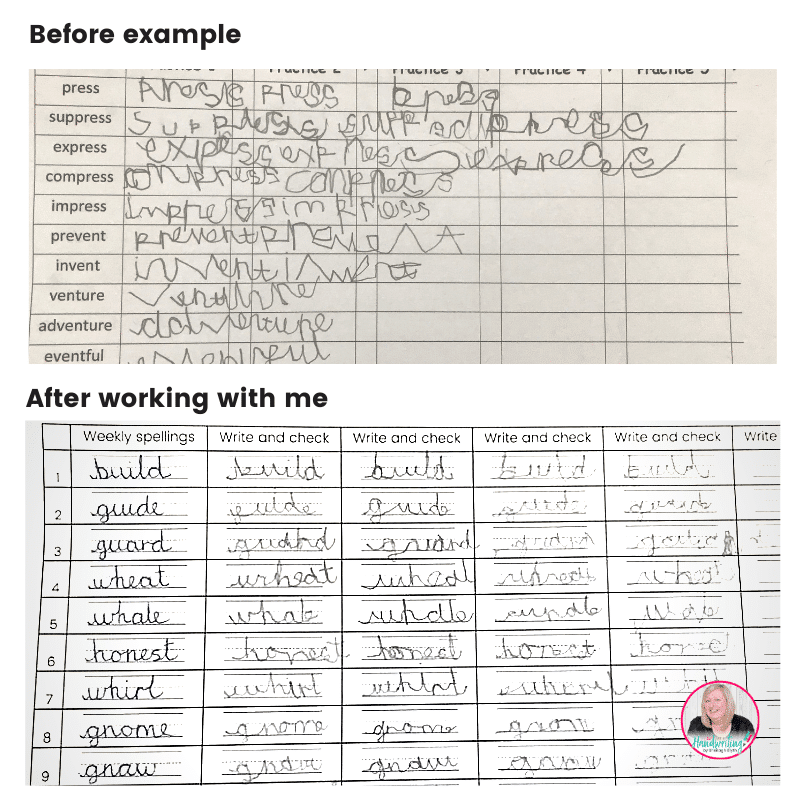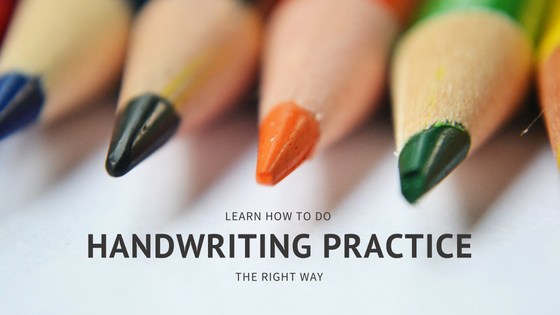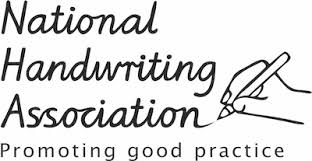Kids handwriting practice 7 to 8 years.

Is your child working towards a pen licence?
Do you feel your child hasn’t quite fully grasped how to write neatly?
Is your child beginning to avoid writing?
Learning how to do handwriting practice the right way
In this article, I’m going to show you how by making changes to your child’s handwriting this will give them a massive difference to their writing in just 24 hours.
Between the ages of seven and eight years, handwriting is all about fine tuning. Previously, your child should’ve already have mastered the fundamentals of pencil grip, letter formation and word spaces.
Teachers are expecting words to be clearly written on the line. Letters will either be standing tall, sitting on the line or falling, namely going below the line.
From now on, handwriting is all about legibility and content. And the dreaded ‘pen licence’. This phrase may already be starting to appear in conversations with your child. Pen licences are designed to be promoting “good” handwriting. On the other hand they can be discouraging for children who find handwriting difficult.
In school your child will be having less and less time practising how to write. They will probably be only getting 30 minutes practice a week. The problem is those needing more time will not be getting it.

Let me tell you about Ethan

Ethan is a delightful boy who enjoyed drawing but disliked all writing especially spellings. Both at home and at school day he was starting to try and avoid handwriting. He would be asking for a drink of water. Asking to go to the toilet. Saying that he needed to sharpen his pencil. Or try and distract others from writing. Ethan was fearing failure and his confidence was being knocked.
Both his Mum and I worked with him. We concentrated on improving his letter size. Ethan was shown the cat method (as described below). This simple technique was one of many I gave him to help him transform his writing. We did many quizzes, Minecraft activities and guessing true/false facts to help make writing more interesting. I also encouraged him to review his own work. He quickly made progress.
Ethan continues to enjoy drawing. Handwriting is still not his favourite subject but he no longer tries to avoid it.
There is a right and a wrong way to improving handwriting
How handwriting practice at home, can you improve your kids aged 7 to 8 years’ handwriting?
Teach the cat
Imagine that there is a cat sitting on a line. Its head goes up to the top of the line. The cats tail goes below the line. Tall letters go up to the cat’s ears. Letters that go below the line e.g. the letter p, go down to the cat’s tail. This is how the ‘cat’ can teach letter size.
Squared graph paper
Writing on this paper reduces the size of finger gaps that were previously taught for word spaces. A square grid provides a visual guide. Helping your child to improve their letter legibility.
Checklist
Asking your child to review their own work. Children aged 7 to 8 years should easily be able to do this. Self-reflection helps kids keep identifying the changes they need to make. This is especially helpful for when you are not around to guide them.
Maze puzzles
These games help develop eye hand coordination and pencil control skills but in a fun way. Both are essentials for handwriting excellence.
Crosswords
You can help with teaching letter size to your child by encouraging them to do crosswords. The boxes in which they have to write the letters act as a visual guide. It will help them write with smaller letters.
Mistakes (what NOT to do when doing handwriting practice with your child)
Rushing
Letter size is a skill in itself. It needs to be learnt. To begin with, children need time to master this. Often it is presumed by many that it will naturally develop. This will not happen without your guidance.
Pressure
Pressing too heavily can cause pain in the hand. This is due to the pencil grip being too tight. You can teach pen pressure by using light up pens. These are special pens, available off the internet that have a light at the end of the pencil/pen. For example, when used if the light comes on then your child has been pressing too heavily. Pressing heavily should be avoided at all times.
A slouching child
Sitting posture plays a big part in having neat handwriting. If your child is writing without their feet on the floor then pen control is lost. Consider changing their seating position as this will help improve their writing.
To summarise kids handwriting practice 7 to 8 years
It is possible to improve handwriting in just 24 hours. By following the steps above your child’s handwriting practice can make significant improvements. The cat method works exceptionally well and for kids who are beginning to not like writing. Mazes and crosswords can be a parent’s secret tool.





